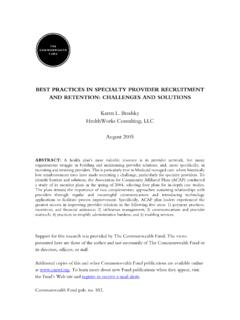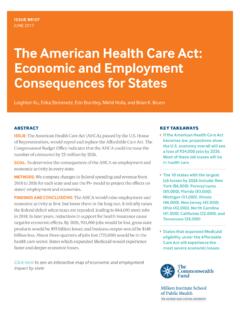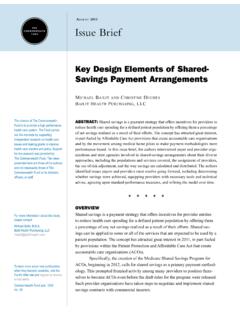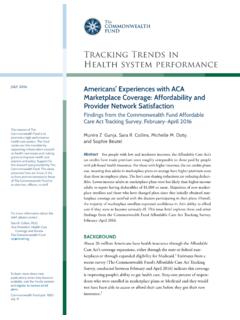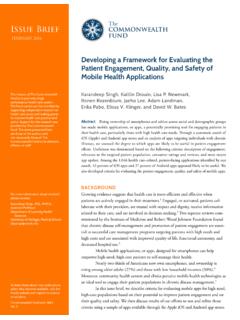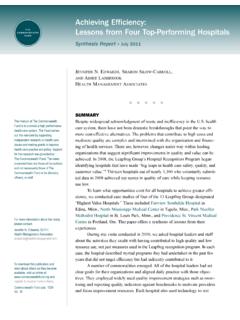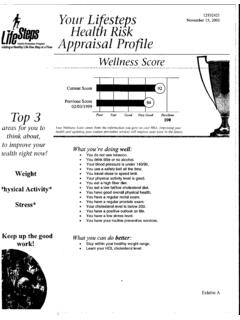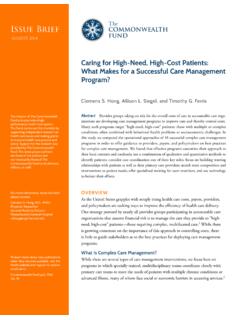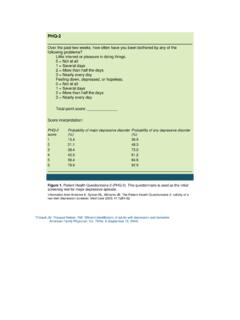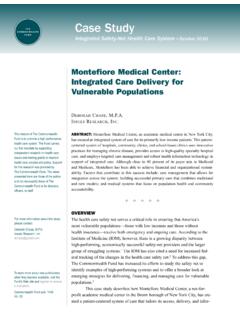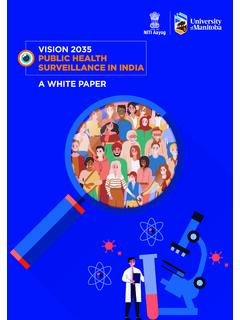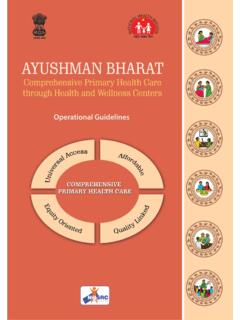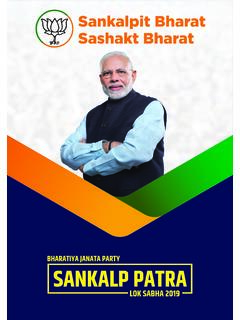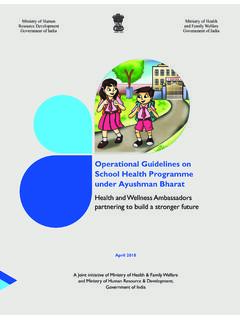Transcription of HEALTH SYSTEM OVERVIEW India - Commonwealth Fund
1 December 2020 All Indian citizens can get free outpatient and inpatient care at government facilities. Under India s decentralized approach to HEALTH care delivery, the states are primarily responsible for organizing HEALTH services. Because of severe shortages of staff and supplies at government facilities, many households seek care from private providers and pay out-of-pocket. For low-income people, the government recently launched the tax-financed National HEALTH Protection Scheme ( ayushman bharat -Pradhan Mantri Jan Arogya Yojana, or PM-JAY), which allows them to also get cashless secondary and tertiary care at private facilities. There are also a handful of HEALTH insurance arrangements for specific population groups like government employees and factory workers. Private voluntary insurance is available, but uptake is SYSTEM age 65+ HEALTH SYSTEM CAPACITY & physicians per 1,000 per 1,000 beds per 1,000 populationHEALTH CARE DELIVERY AND PAYMENTG eneral practitioners (GPs) earn salaries in government facilities.
2 In rural areas, primary care services are provided through a network of subcenters, primary HEALTH centers, and community HEALTH centers. In the cities, government-sponsored primary care providers are generally fewer in number than those in rural communities. Private physicians are typically paid on a fee-for-service basis. Patient cost-sharing: None in government facilities. Cost-sharing varies for private care, depending on a patient s insurance status and coverage. Specialists who work for the government are paid a salary and work at district or tertiary care hospitals. Government facilities operate within an annual budget. Private physicians are paid on a fee-for-service basis. Patient cost-sharing: Same as primary care. Hospitals are divided into government and private hospitals.
3 An estimated 10 percent of hospitals are government facilities, which are funded through an annual budgetary mechanism. Private hospitals charge on a fee-for-service basis. Patient cost-sharing: Same as primary COVERAGE (% OF POPULATION)Uninsured: 63%PM-JAY (National HEALTH Protection Scheme): Tax-financed SYSTEM allows low-income Indians to get cashless secondary and tertiary care at private facilitiesOther schemes: Employees State Insurance Central Government HEALTH Scheme: for civil servants Employment-based schemes: for defense and railway employees Regional schemes: for state public-sector employees and senior citizens Voluntary for-profit private insurance: mostly for employer-purchased group plans0%100%50%Insured: 37% December 2020 Prescription drugs on the essential drug list are free, although there are often shortages.
4 Immunizations, HIV drugs, and drugs for malaria and other vector-borne diseases are also free. Patient cost-sharing: Full price of prescription drugs not on essential drug list. Mental HEALTH care resources are extremely limited. National HEALTH initiatives have established psychiatric centers within specialized public hospitals, but in general there are few hospital beds dedicated to inpatient psychiatric care. Most private insurance plans typically do not provide comprehensive coverage for such care; in the few that do, covered treatment options usually focus on short-term psychotherapy rather than on long-term care, both primary and specialized care, is provided for free in dedicated HEALTH care facilities for seniors. However, there is an unmet need for comprehensive elderly care.
5 Patient cost-sharing: Most long-term care is financed by individuals and households. Care coordination is limited, and care is fragmented. Some states are working to integrate traditional schools of medicine Ayurveda, yoga/naturopathy, Unani, Siddha, and homeopathy into their public HEALTH systems. TOTAL HEALTH EXPENDITUREST otal HEALTH spending accounted for percent of India s GDP for 2017. The public sector accounts for one-quarter of HEALTH expenditures. Out-of-pocket expenditures accounted for 65 percent of total HEALTH expenditures in 2015 2016. RECENT REFORMS Launch of ayushman bharat , which encompasses the National HEALTH Protection Scheme, for coverage of tertiary care for vulnerable populations and HEALTH and Wellness Centers initiative for the delivery of comprehensive and integrated primary care.
6 Start of universal sanitation coverage and an effort to make the country free of open defecation through the Swachch bharat Mission. Launch of Intensified Mission Indradhanush to achieve 90 percent vaccination coverage for children under 2. Provision of clean cooking fuel under the Pradhan Mantri Ujjwala Yojana scheme, as well as nutritional and social support for all National HEALTH Protection Scheme beneficiaries with tuberculosis. Setting of uniform standards for medical education. Creation of a HEALTH technology assessment body under the Department of HEALTH $209 HEALTH care spending per capita$136 Out-of-pocket HEALTH spending per capitaHEALTH STATUS & DISEASE expectancy at birth (years) prevalenceIndiaH E A LT H S Y S T E M OVERVIEWThis OVERVIEW was prepared by Indrani Gupta, in collaborat ion with Nishali : 2019 OECD HEALTH Data except obesity data, which represent WHO estimates from 2016.
